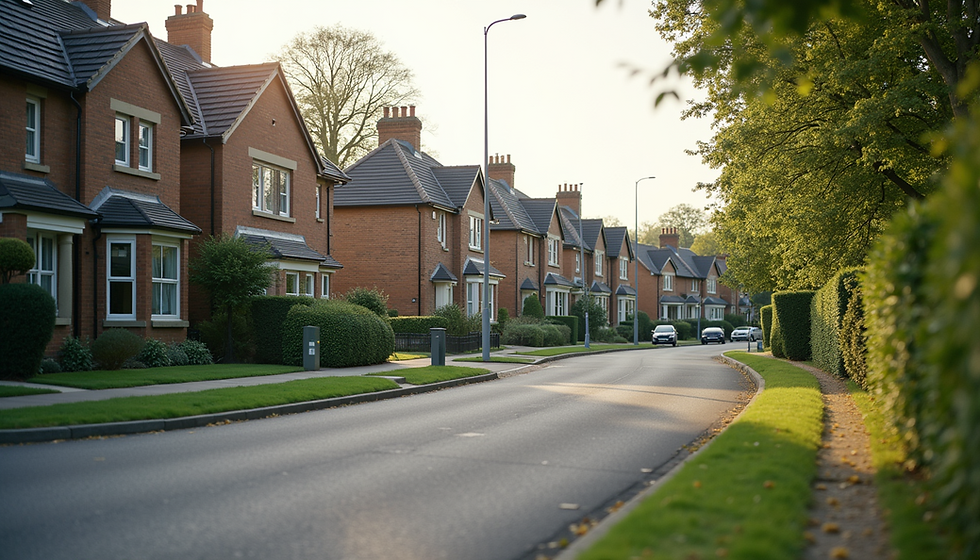UK house prediction in 2022.
- Lubomir Trizuliak, MA, MBA
- Dec 5, 2021
- 3 min read
In a week of uncertainty — about the dangers of the Omicron variant or whether the Bank of England will raise interest rates in a fortnight’s time — one thing was certain: the housing market is still going strong. Prices have continued to rise strongly throughout this year, increasing by 5.6% in the first six months and driven by elevated levels of demand. It’s expected that by the end of the year, the UK will see prices rise by a total of 9.0%.
Homes collectively worth £473 billion will be sold this year, that’s up £95 billion on the number of offers accepted in 2020.
Year 2021 has been one of the busiest for the housing market in more than a decade. Homes collectively worth £473 billion will be sold this year, that’s up £95 billion on the number of offers accepted in 2020. Britain’s homes had a total value of £9.2 trillion on the open market this summer. It said the combined value of Britain’s 28.6 million residential homes increased by £550 billion in the past year. Property stock shortages – which began after the first lockdown – look set to continue against the backdrop of a strong housing market, said Bannister, while fixing in a mortgage rate before rates rise is proving an additional incentive.
Tim Bannister, Rightmove’s director of property data, says: “It’s been a hectic 18 months for the property market since the end of the first lockdown. The net result as we approach 2022 is the lowest ever available stock of property for sale, with high buyer demand.”
In a year in which one in 16 homes in the UK are expected to have changed hands — the busiest year for the housing market since 2007 — each estate agency office was left with an average of just one home for sale for every 24 buyers. It is a situation described as “unsustainable” by Propertymark, the body for estate agents. Yet averages mean little, with types of buyer, styles of property and locations faring differently. Here we round up the winners and losers in the property market in the next year.
Savills believe that while transactions and thus price growth will continue into 2022, it’ll be tempered by the exceptional growth we’ve seen this year – especially if interest rates start to rise sooner than expected.
It’s expected that during 2022, the Midlands and the North of England will show the strongest price growth, mainly driven by their greater capacity for growth. Among the UK’s largest cities, Liverpool, Manchester and Sheffield continue to show the highest rates of growth, at 10.6%, 8.7% and 7.9% respectively. North West in on the top of property prices in UK.
Few other predictions for 2022. Rightmove predicted that property prices would rise 5%, CBRE 4.5%, Savills 3.5%, Zoopla 3.0%, EY Item Club 2.5%, Oxford Economics−1.4
Lucian Cook, head of residential research at estate agent Savills, said: “There is no great surprise to see a fall in the number of mortgage approvals in October given the distortive effect of the end stamp duty stamp duty holiday in September.
“In the year to the end of September, we saw total spend in the UK housing market exceed £500bn for the first time ever to £513bn. This represents an increase of £170bn on pre-pandemic levels, a reflection of three key factors: the so-called race for space as people looked to trade up the housing ladder, the cheap cost of mortgage finance, and the added impetus provided by the stamp duty holiday.
“Activity in the more expensive price brackets continues to hold up strongly, so we expect to see a higher than normal spend in 2022. That said, it’s difficult to see how spending next year can match the extraordinary levels of late across the market as a whole without such a mix of strong drivers.
The provisional number of residential property transactions (seasonally adjusted) in October 2021 stood at 76,930, which is a staggering 52% less than September, and 28.2% lower than October 2020. Total supply of homes is -42% below the five-year average, but for houses, stock volumes are -55% lower.
The new figures are according to HMRC’s latest monthly data which estimates property transactions on homes worth over £40,000 (where stamp duty usually becomes payable).
The large drop in transactions is due to the end of the stamp duty holiday (a temporary increase in the nil rate band) which, in England and Northern Ireland, fell at the end of September.
The Bank of England said today that its Bank base rate will remain at 0.1% at least until 16 December, when the next announcement is due. Its Monetary Policy Committee, which decides the rate, voted 7-2 on Tuesday to keep it at its current record low, where it has been since March 2020.
My humble prediction would be growth but just a minimal 1%, based on that UK property will remain in long term a good investment.



Comments